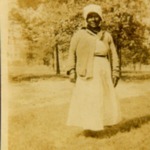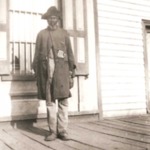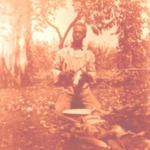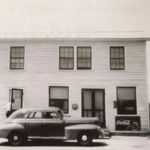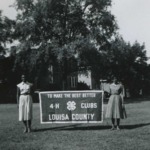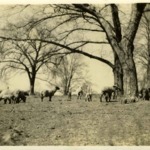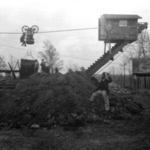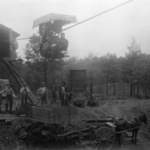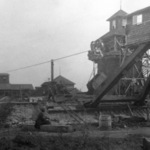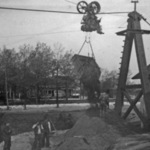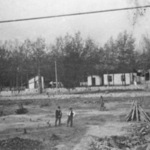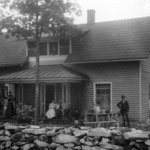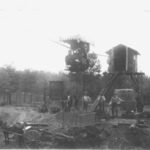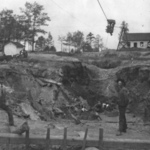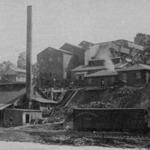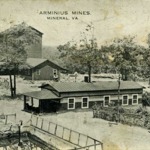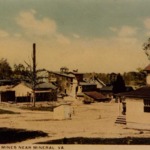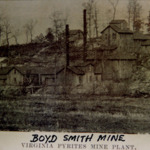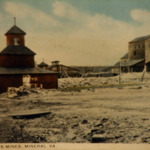Browse Items (1533 total)
Sort by:
Aunt Dinah Robinson
This photograph is an image of Aunt Dinah Robinson who served as the janitor at the Mineral High School during the era of segregation. In most cases, it was African Americans who worked as the janitors at white schools, and they witnessed the…
Tags: African American, Schools, Segregation
Jeff Porter
These images are photos of Jeff Porter and his home. Porter was born sometime in 1849. Throughout his lifetime in Louisa County, Porter lived at Trevillians Depot. We know little more about him than what these photos reveal, except that he was a…
Tags: African American, Segregation
Daily Life
For many African Americans, daily life after slavery was not much different than life in bondage. There was still a struggle for survival for many African American families. Most of the residents of Louisa County lived on farms and until Rural…
Gordon Family
While many African American families struggled to survive as well as to receive a good education, there were a few families who prospered after emancipation. Reuben Gordon was a former slave who worked on the Garland Plantation. After the Civil War,…
Tags: African American, Segregation
Negro 4-H Clubs
During the Jim Crow era every area of life was segregated. In many ways, two parallel universes existed in the South and in Central Virginia; one white and one black. Since agriculture was vitally imporant to white and black farmers in Louisa…
Corduroy Farm
These images are from Corduroy Farm, a large farm located about 8 miles west from the town of Louisa. during the World War II period. Rural electrification did not come to outlying areas until a few years after the war, so farming practices relied…
Tags: Agriculture, World War II
Henry "Box" Brown
Henry Brown was born about 1815 in Louisa County at a plantation known as “The Hermitage,†located about two miles from Cuckoo (shown in this photo as it appears in 2011). His master, John Barret, was a Revolutionary war veteran and a former…
Tags: African-American, Plantation, slavery
Arminius Mines
This image displays the daily operations of the Arminius mines, one of the largest mines in the area. Pyrite from the Arminius Mines was often manufactured for sulphuric acid in fertilizer.
Tags: Mining
Arminius Mines
This image is of the daily operations of the Arminius mines, one of the largest mines in the area. Miners used a skip to transport three or four tons of ore at a time across the mine to be crushed before being washed in jigs.
Tags: Mining
Arminius Mines
This image displays the daily operations of the Arminius mines, one of the largest mines in the area. Several men are watching a skip above dump ore that had been transported across a cable to be crushed.
Tags: Mining
Arminius Mines
This image shows the daily operations of the Arminius mines as ore is transported over a cable using a skip and dumped to be crushed. In the background, managers' housing can be seen. The managers of the Arminius Mines, especially superintendent…
Tags: Mining
Arminius Mines
This image displays the daily operations of the Arminius mines. It includes a man transporting supplies across the mines by a skip. Skips were capable of moving three to four tons of ore across short distances at the mine.
Tags: Mining
Arminius Mines Housing
This image is of a home at the Arminius Mines, one of the largest mines in the area. Families of miners lived on the property and created their own distinct culture that altered the entire town. The miners were rowdier than Mineral's previous…
Tags: Mining
Arminius Mines
This image is of the daily operations of the Arminius mines, one of the largest mines in the area. A skip is seen in many of the images of the mines. It was used to transfer three to four tons of ore which are then dumped into big crushers before…
Tags: Mining
Arminius Mines Shafts
This image shows miners working in three shafts as a part of the daily operations of the Arminius Mines. A skip is pulling materials from across the shafts and miners can be seen doing manual labor in the first shaft.
Tags: Mining
Postcard of Arminius Mines
This is a postcard of the business center for the Arminius Mines. The Arminius Mines struggled financially as they were constantly behind in their shipments. The company changed owners on several occasions. In the first sale, they hoped to obtain…
Tags: Mining
Postcard of Boyd Smith Mines
This is a postcard of the buildings of the Boyd Smith Mine, one of the larger mines in the area. With twenty-four mines in the Contrary Creek area, mining was a large source of employment for Louisa County.
Tags: Mining
Boyd Smith Mine
This image is of the buildings of Boyd Smith Mine. The caption reads "Virginia Pyrite Mine Plant." There were twenty-four mines in the area, each located along Contrary Creek.
Tags: Mining
